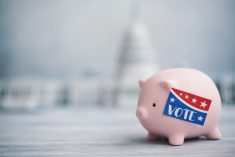Warren Buffett is one of the best investors the world has ever seen. One of his most famous quotes is, “Be fearful when others are greedy, and greedy when others are fearful,” which aligns with the direction of my thoughts for the coming year. By the time you read this, some of the predictions may be on their way to being on track or out to lunch, but please keep in mind they were written at the end of 2022.
What perplexes and astounds me is how Warren Buffett is so widely idolized yet his advice is so poorly followed. He fills an arena for Berkshire’s annual meeting and is endlessly quoted. Yet if investors listened to his advice, would we have had the wild speculative eras of 1998-2000 or 2020-21? Would the entire stock market turn over approximately every year and a half?
This means the average investor holds a stock for just 18 months. By comparison, my personal turnover rate is less than 10 per cent, meaning my average holding period is more than 10 years. My best performance relative to the market came during the largest downturns in 2000-02, 2008 and again in 2022.
Read Also

Gentle treatments for pain in the neck
Heading toward year-end, people unknowingly tense up against the cold and busyness, causing neck pain that can often be treated with appropriate support and gentle mobility, athletic therapist Kathlyn Hossack says.
While 2022 was a difficult year for many market participants, what does 2023 have in store? Rarely has market and economic sentiment been as dour. For the first time in more than 20 years, Wall Street forecasts are predicting a slight negative return for the S&P 500. Not to be outdone, the Association of Individual Investors (AAII) is recording near historical lows in its bull to bear ratio with 20.5 per cent bulls to 42.0 per cent bears. It is rare to have twice as many bears as bulls. A recession is a foregone conclusion by most.
Almost every article I come across follows the same theme. Continued downside volatility and interest rate increases for the first half of the year, probable recession, then an easing of interest rates and market recovery in the second half. I have a saying that, “Everybody is usually wrong.” When the proverbial everybody is doing something it’s time to look a different direction. Here are my fearless predictions for 2023:
1. Most predictions will be wrong, again.
2. No recession in 2023. Recessions usually don’t occur until a few years after the interest rate tightening cycle begins. The tightening cycle for the 1980-82 recessions began in 1976, in 1986 for the 1990-91 recession, in 1998 for the 2001 recession, and in 2004 for the 2007-09 recession. This tightening cycle has been faster than others, but it would be unusual to see a recession within a year of its start.
The Canadian consumer is in tough shape, overextended on mortgage and credit card debt, but natural resources will buoy our economy. The American consumer is in better shape. Another contributing factor is the re-shoring of supply chains. A couple of examples are Intel’s $20-billion investment in Ohio and Taiwan Semi-Conductor’s $40-billion investment in Arizona. Canadian housing will continue to correct but I think American housing will stabilize and perhaps recover.
3. Oil will recover from recent losses. The decline from $120 to $70 was surprising and didn’t seem predicated on fundamentals. I think it was caused by the fear of a major recession. Worldwide inventories are well below average and American inventories are at the bottom of their five-year range, despite 180 million barrels being released from the Strategic Petroleum Reserve (SPR). This was equivalent to one per cent of worldwide demand for 180 days. Biden has stated they will add back at $65.00 to $72.00, putting support under the price. China lockdowns reduced worldwide demand by another one per cent. Aggregate company CAPEX is growing slowly but remains half of what it was a decade ago. I continue to believe we are bad policy sleepwalking towards a crisis. Other commodities are also in short supply.
4. Inflation will abate until energy price increases manifest. Oil is a large contributor to inflation because its cost is in virtually everything. I think inflation will come down into the three to four per cent range but could easily escalate again later in the year. As such, I don’t think interest rates will come down as others predict, but they won’t go up a lot either.
5. Markets will be more buoyant than predicted. The third year of a presidential cycle is historically the most robust averaging 18 per cent gains. Additionally, since the Second World War, there have been 21 negative years and only three times has the subsequent year been negative, 1974, 2001 and 2002. The average return after a negative year has been 14.2 per cent. Therefore, I am predicting the S&P 500 to go up 15 to 20 per cent. I think the Canadian market will outperform the American market, led by resources and financials.
There are two major caveats to these predictions. The first is my first prediction and the second is an unusual amount of geopolitical tension in the world. Take these and every other prediction with a shaker of salt. Long term, the market has gone up an average of 10 per cent a year, and that’s how it compounds wealth.
















